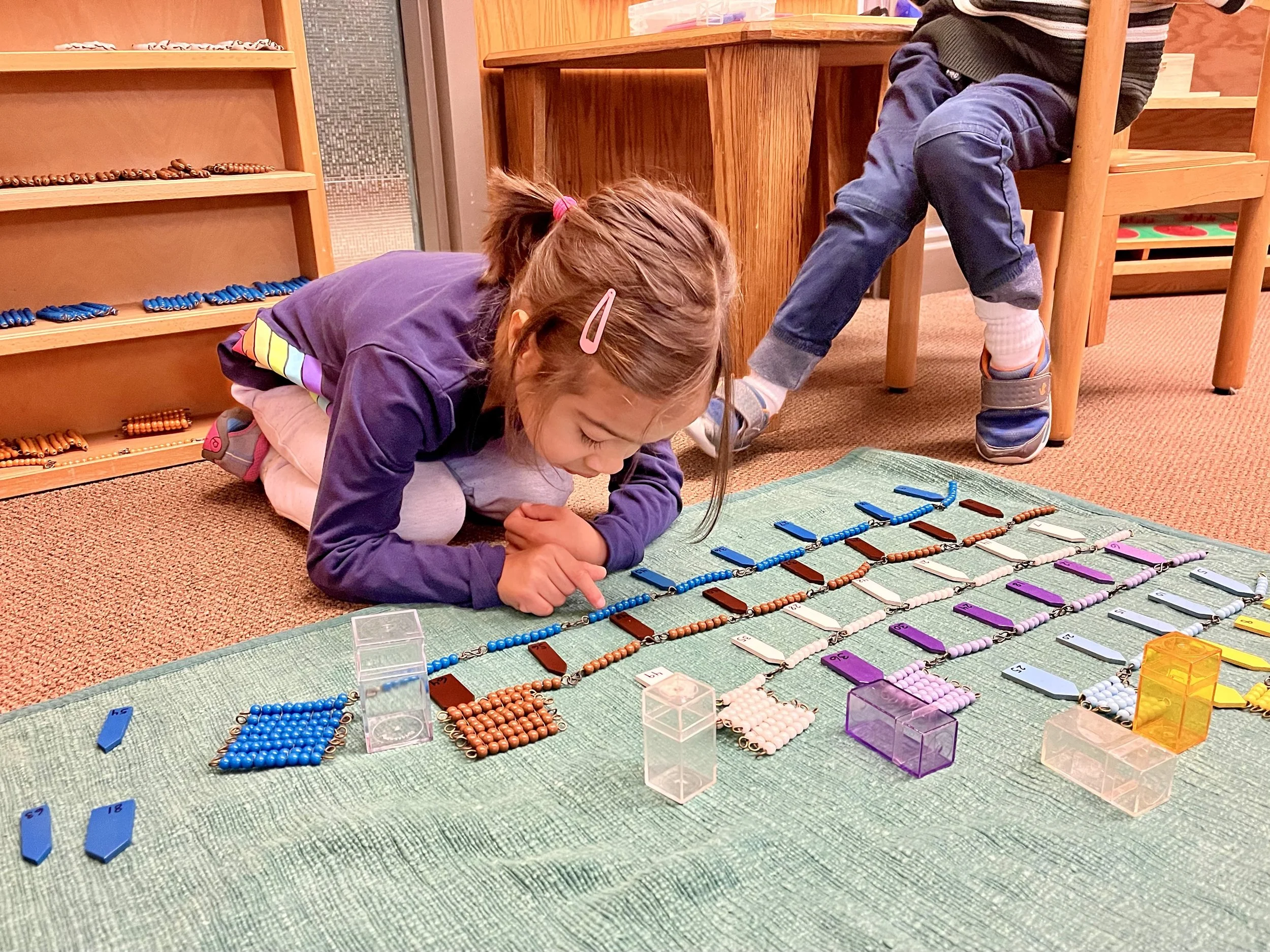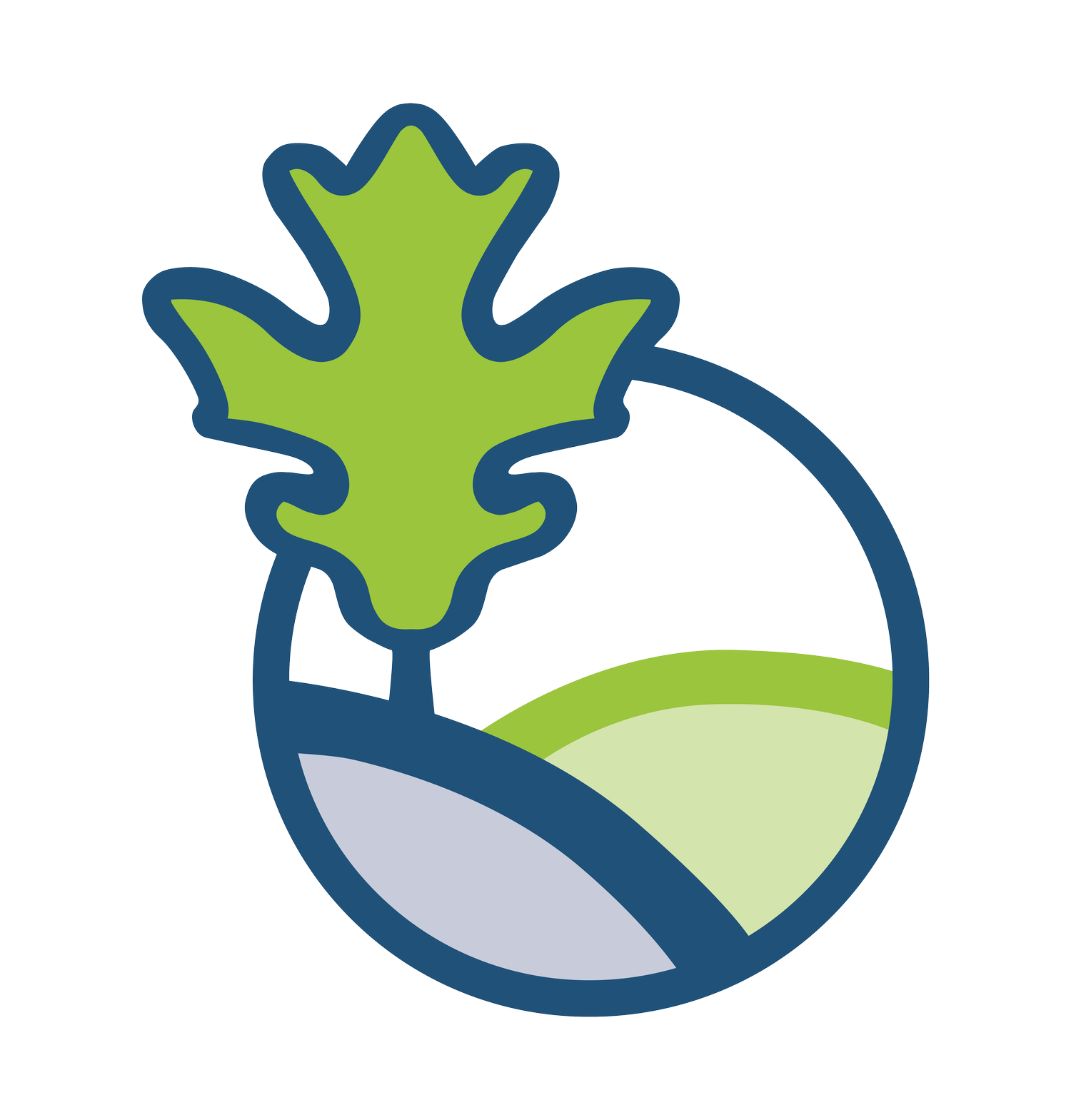Children’s House
Pre-K & Kindergarten

Children’s House
Ages 3-5 Years
Half-Day: 8:45am-11:45am
Full-Day: 8:45am-3:45pm
Children’s House: Level Overview
Pre-K and Kindergarten
One of the unique aspects of the Children’s House level is the multi-year cycle. Children as young as three and as old as six are in the same room. At first glance, a Children’s House classroom can appear as an unstructured environment with beehive-esque energy and activity. However, when looked at more closely, that beehive is being driven by students doing their own work and making their own choices. Some children may be working alone, others in pairs or groups. The classroom is designed to allow students to learn in the manner which best suits them.
Purpose and Goal
Dr. Montessori felt that the goal of early childhood education should not be to fill the child with facts from a pre-selected course of studies, but rather to cultivate the child’s own natural desire to learn, developing his/her own intellect and personality.
Classroom Structure
The Children’s House structure provides benefits to both the younger and older students alike. If a Kindergartener can help guide a younger classmate through his/her work, the younger student benefits from the social and educational interaction, while the older student reinforces his/her academic skill set and develops leadership skills. In this level, learning self-direction and self-worth is as important as academics.
Every bit of learning in the Children’s House room is essentially a puzzle. This objective is approached in two ways: first, by allowing each child to experience the excitement of learning by his/her own choice rather than by being led; and second, by helping the child perfect his/her natural tools for learning.
For example, consider math. A child will first be shown numbers and beads which represent numbers. Over time, the student learns that those numbers can be manipulated, naturally leading to the beginnings of mathematical operations. When it comes to reading and writing, materials such as the moveable alphabet allows them to not only learn through repetition, but also by having a tactile and visual mechanism to see how words are created. Materials are also available for children to pursue their interests in topics such as geography, science/nature, and history.
All students in this level benefit from group activities. From discussions and recess to stories and songs, being together is an integral part of the day in Children’s House.
Targeted Outcomes for students after completing the Children’s House program
Independent care of self
Foundational knowledge of all four mathematical operations
Phonetic understanding of reading and writing
Understanding the basics of sentence structure
Strong sense of who they are as people
Consideration for fellow students and adults
Kindergarten: Level Overview
During the final stage of the multi-year cycle, Kindergarten students act as the classroom leaders in the combined classroom with children as young as three. At first glance, a Children’s House classroom can appear to an outsider as an unstructured environment with beehive-esque energy and activity. But when looked at more closely, that beehive is being driven by students doing their own work, after making their own choices. Some children may be working alone, others in pairs or groups. The classroom is designed to allow students to learn in the manner which best suits them.
Purpose and Goal
Dr. Montessori felt that the goal of early childhood education should not be to fill the child with facts from a pre-selected course of studies, but rather to cultivate the child’s own natural desire to learn, developing his/her own intellect and personality.
Classroom Structure
The Children’s House structure provides benefits to both the younger and older students alike. When the Kindergartener can help guide a younger classmate through his/her work, the younger student benefits from the social and educational interaction, while the older student reinforces his/her academic skill set and develops leadership skills. In this level, learning self-direction and self-worth is as important as academics.
Every bit of learning in the Children’s House room is essentially a puzzle. This objective is approached in two ways: first, by allowing each child to experience the excitement of learning by his/her own choice rather than by being led; and second, by helping the child perfect his/her natural tools for learning.
All students in this level benefit from group activities. From discussions and recess to stories and songs, being together is an integral part of the day in Children’s House.
Targeted Outcomes for students after completing the Kindergarten year of the Children’s House program
Independent care of self
Foundational knowledge of all four mathematical operations
Phonetic understanding of reading and writing
Understanding the basics of sentence structure
Strong sense of who they are as people
Consideration for fellow students and adults
Oak Hill Montessori Community School is proud to offer authentic Montessori education to every student. All lead teachers are licensed teachers who have completed AMI or AMS Montessori training in addition to a bachelor’s degree or higher.

Why Montessori Matters
Montessori education is designed to support the whole child—academically, socially, and emotionally. Grounded in more than a century of research and real-world success, the Montessori method helps children become independent thinkers, capable collaborators, and lifelong learners.
Studies show that Montessori students often demonstrate stronger executive function skills, greater intrinsic motivation, and higher levels of academic achievement and well-being compared to peers in traditional settings.* With mixed-age classrooms and hands-on materials, Montessori environments foster curiosity, concentration, and confidence—empowering children to take ownership of their learning.
Our Mission
Our Vision
Preparing every student for tomorrow by nurturing the love of learning today.
Creating a space for students, families, and community members to thrive as they collaborate to learn, to celebrate, and to serve one another.
Our Values
Independent thinking and self-reliance through purposeful work
Inclusivity in our community and a sense of belonging for all
Compassion for others and the environment around us
A vision for peace through social change
“Our time in the Children’s House program at Oak Hill Montessori has been truly transformative. The nurturing environment, dedicated guides and thoughtfully prepared spaces helped our child grow in confidence, independence and joy for learning.”
- Oak Hill Montessori Community Parent




